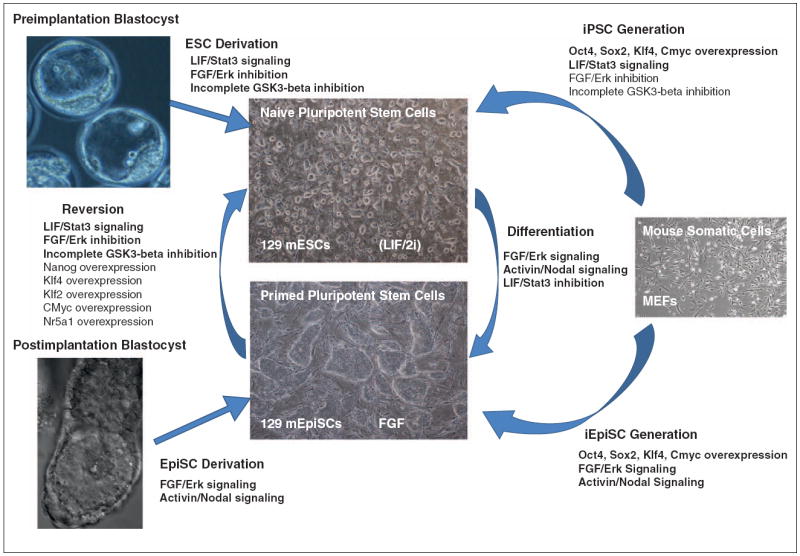Figure 1.

Accessing rodent naïve pluripotency through three different routes.
Pluripotent stem cells may be derived from in vivo sources such as the preimplantation blastocyst or the postimplantation epiblast, resulting in naïve mouse ESCs or primed EpiSCs respectively. Naïve iPSCs or primed iEpiSCs may be obtained by altering the cultural conditions during somatic cell reprogramming. Finally, naïve and primed pluripotent stem cells are directly interconvertible by differentiation of naïve pluripotent stem cells to primed pluripotent stem cells, or direct reversion of primed pluripotent stem cells to a naïve state. Therefore, naïve pluripotency may be captured in vitro in the form of (a) embryonic stem cells (ESCs) during ESC derivation, (b) induced pluripotent stem cells (iPSCs) during somatic cell reprogramming, or (c) Epi-iPSCs during reversion of EpiSCs to a naïve mESC-like state.
